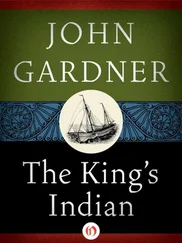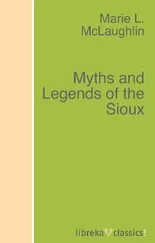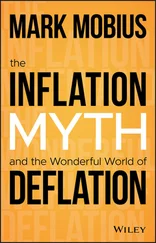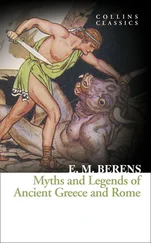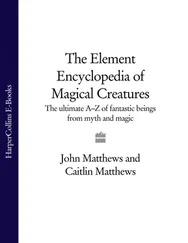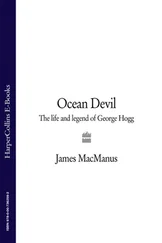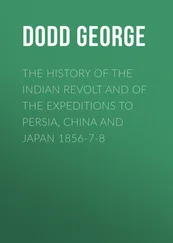Donald Alexander Mackenzie - Indian Myth and Legend
Здесь есть возможность читать онлайн «Donald Alexander Mackenzie - Indian Myth and Legend» — ознакомительный отрывок электронной книги совершенно бесплатно, а после прочтения отрывка купить полную версию. В некоторых случаях можно слушать аудио, скачать через торрент в формате fb2 и присутствует краткое содержание. Жанр: foreign_prose, foreign_religion, Философия, Мифы. Легенды. Эпос, foreign_psychology, foreign_antique, на английском языке. Описание произведения, (предисловие) а так же отзывы посетителей доступны на портале библиотеки ЛибКат.
- Название:Indian Myth and Legend
- Автор:
- Жанр:
- Год:неизвестен
- ISBN:нет данных
- Рейтинг книги:4 / 5. Голосов: 1
-
Избранное:Добавить в избранное
- Отзывы:
-
Ваша оценка:
- 80
- 1
- 2
- 3
- 4
- 5
Indian Myth and Legend: краткое содержание, описание и аннотация
Предлагаем к чтению аннотацию, описание, краткое содержание или предисловие (зависит от того, что написал сам автор книги «Indian Myth and Legend»). Если вы не нашли необходимую информацию о книге — напишите в комментариях, мы постараемся отыскать её.
Indian Myth and Legend — читать онлайн ознакомительный отрывок
Ниже представлен текст книги, разбитый по страницам. Система сохранения места последней прочитанной страницы, позволяет с удобством читать онлайн бесплатно книгу «Indian Myth and Legend», без необходимости каждый раз заново искать на чём Вы остановились. Поставьте закладку, и сможете в любой момент перейти на страницу, на которой закончили чтение.
Интервал:
Закладка:
Donald A. Mackenzie
Indian Myth and Legend
SITA FINDS RAMA AMONG LOTUS BLOOMS
From the painting by Warwick Goble
PREFACE
This volume deals with the myths and legends of India, which survive to us in the rich and abundant storehouse of Sanskrit literature, and with the rise and growth of Brahmanism, Buddhism, Jainism, &c. The reader is introduced to the various sacred works of the Hindus, including the ancient invocatory hymns of the four Vedas, the later speculative and expository “Forest Books” in which “the Absolute is grasped and proclaimed”, and those great epic poems the Rámáyana , which is three times longer than the Iliad , and the Máhábharata , which is four times longer than the Rámáyana . In no other country have the national poets given fuller and finer expression to the beliefs and ideals and traditions of a people, or achieved as a result wider and more enduring fame. At the present day over two hundred million Hindus are familiar in varying degrees with the legendary themes and traditional beliefs which the ancient forest sages and poets of India invested with much beautiful symbolism, and used as mediums for speculative thought and profound spiritual teachings. The sacred books of India are to the Hindus what the Bible is to Christians. Those who read them, or hear them read, are believed to be assured of prosperity in this world and of salvation in the next. To students of history, of ethnology, and of comparative religion they present features of peculiar interest, for they contain an elaborate sociology of the ancient Aryo-Indians, their political organizations, their codes of laws, their high ethical code, and above all their conceptions of God, the soul, and the Universe. Some knowledge of them is necessary for those who desire to approach with sympathy the investigation of the religious beliefs of our Hindu fellow men and to understand their outlook upon life and the world.
The Introduction deals with various aspects of the study of these ancient myths and legends which have been the inspiration of a national literature infused with much grandeur and sublimity. The historic Aryan controversy, of which the science of comparative mythology is a by-product, is passed under review, and it is shown to what extent philological theories regarding race problems have been modified during recent years as a result of the adoption of broader and more exact methods of ethnic and archæological research and the ever-extending study of comparative mythology. There has also been condensed much important data dealing with the early phases of Aryo-Indian civilization accumulated for historical purposes by industrious and painstaking Sanskrit scholars who have been engaged in investigating and systematizing the internal evidence of the various religious poems and treatises. It will be found that no general agreement has yet been reached regarding Aryo-Indian chronology, but it now appears to be well established that although there were early cultural as well as racial “drifts”, fresh invasions, which had far-reaching results in the social and religious life of northern India, occurred at a late period in what is known as the Vedic Age. In consequence, the problem presented by this ancient civilization tends rather to grow more complex than to become simplified. Its origin is still wrapped in obscurity. At the very dawn of history Aryo-Indian culture had attained a comparatively high state of development, and a considerable period must be allowed for its growth. Even some of the ancient Vedic hymns, addressed by priests to the deities, are styled “new songs”, which suggests the existence of an older collection. Many of them also afford indications that immemorial beliefs were in process of change and fusion. The sublime deities, Varuna and Mitra (Mithra), for instance, were already declining in splendour. Yet they must have been closely associated with Indra, king of the gods, in the unknown Aryan homeland, as is made evident by an inscription recently deciphered at Boghaz Köi, in Asia Minor, which refers to them as deities of the mysterious Mitanni people who were of Aryan speech like the settlers in the Punjab. There is no evidence, however, that the Mitanni rulers gave recognition to the fire god Agni, who in India was exalted as the twin brother of Indra. The problem involved may not be devoid of ethnic significance, although the identity of the Agni-worshipping section of the early raiders remains obscure.
During the early Vedic Age in India prominence was given to the gods: the social organization was of patriarchal character; the goddesses remained shadowy and vague, some being, indeed, little more than figures of speech. A great change took place, however, after the invasions of the Bharata and other tribes who are now referred to as “late comers”. Profound and speculative thinkers attained to the pantheistic conception of the world soul; new doctrines, which are not referred to in the Vedic hymns, regarding the ages of the universe and transmigration of souls, received wide acceptance as the result of missionary efforts: the Vedic gods were reduced to the position of minor deities and new goddesses rose into prominence, one indeed being Bharati, the tribal deity of the Bharatas, who became associated with the Saraswati river and under her new name was ultimately made the wife of the supreme god Brahma. It is significant to note that the new culture radiated from the “Middle Country”, the area controlled by the “late comers”. That it contained elements which were not of Indian origin is made clearly evident when we find that the doctrines of the ages of the universe and transmigration of souls were shared by other peoples, including the Greeks and Celts and a section of the ancient Egyptians. Sumero-Babylonian and Egyptian resemblances may also be traced in post-Vedic religious literature, the former, for instance, in the Deluge legend, and the latter in the myth regarding the avenging goddess Kali, who slaughters the enemies of the gods like Hathor-Sekhet, and has similarly to be restrained by one of the deities. The worship of goddesses was also prominent among the Sumerians, Egyptians, Greeks, and Celts, as contrasted with the worship of gods among broad-headed mountain and wandering peoples. In this connection special interest attaches to the conclusions of prominent ethnologists, who include in the Mediterranean or “Brown” race of brunet “long heads” the early Egyptians and Neolithic Europeans, the Sumerians and present-day “Aryan” types in India, and especially in the old “Middle Country” and Bengal. On the other hand, a broad-headed type is still prominent in the Punjab, the area occupied by the earliest invaders who worshipped the Vedic gods. Dr. Haddon suggests that these pioneers of civilization were mixed with peoples of Mongolian and other affinities. Some such ethnic explanation must be urged to account for the differences between Vedic and post-Vedic mythologies. The invasions of the “late comers”, who entered India by a new route, no doubt stimulated thought and promoted culture after settled conditions were secured, as was undoubtedly the result of the mingling of races elsewhere.
“It may be put down as an axiom”, says Professor Jastrow, “that nowhere does a high form of culture arise without the commingling of diverse ethnic elements. Civilization, like the spark emitted by the striking of steel on flint, is everywhere the result of stimulus evoked by the friction of one ethnic group upon another”: and he supports his theory with the evidence afforded by Egypt, Babylonia, Greece, Rome, France, Germany, and Great Britain, as well as the present-day United States of America, “the melting pot” of many peoples.
Throughout this volume comparative evidence is provided to assist the reader towards the study of this most interesting aspect of the Aryan problem. We trace the cremation custom, which has prevailed in India since Vedic times, to countries as wide apart as Great Britain, into which it was introduced during the Bronze Age, and Southern Siberia, where it is still practised by the Mongolian Buriats. Over the areas occupied by representatives of the Mediterranean race it was unknown prior to the invasions of unidentified fire-worshippers. Special interest also attaches to the horse sacrifice, which was also an Aryo-Indian ceremony even in Vedic times. It is not yet unknown among the Buriats. At one time the horse sacrifice was widely prevalent. White horses were sacrificed to the sun in Ancient Greece; the sun horses are referred to with horror by Ezekiel; the ceremony was also connected with the mysteries of Aricia grove. Indeed, as is pointed out in
Читать дальшеИнтервал:
Закладка:
Похожие книги на «Indian Myth and Legend»
Представляем Вашему вниманию похожие книги на «Indian Myth and Legend» списком для выбора. Мы отобрали схожую по названию и смыслу литературу в надежде предоставить читателям больше вариантов отыскать новые, интересные, ещё непрочитанные произведения.
Обсуждение, отзывы о книге «Indian Myth and Legend» и просто собственные мнения читателей. Оставьте ваши комментарии, напишите, что Вы думаете о произведении, его смысле или главных героях. Укажите что конкретно понравилось, а что нет, и почему Вы так считаете.

